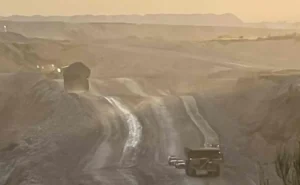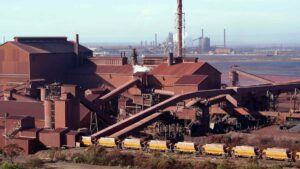The Victorian government has set the stage for its first round of offshore wind energy auctions, with a plan to call for expressions of interest from proposed projects in late 2024 and to award contracts in 2026.
In its latest Offshore Wind Implementation Statement, published late last week, the state government says a competitive auction process has been identified as the best path to deliver Australia’s first tranche of projects and to meet Victoria’s targets of 2GW by 2032, 4GW by 2035 and 9GW by 2040.
The statement says the auction process aims to start with an Expression of Interest (EOI) phase that would kick off in the fourth quarter of 2024 and close in the first quarter of 2025.
A formal Request for Proposal (RFP) phase is then proposed to kick off in the third quarter of 2025 and close in the first quarter of 2026, with contract negotiation and award expected to occur later in 2026.
“After assessing the merits of various competitive procurement approaches, the Victorian government has identified an auction as the most suitable approach to procure the first tranche of offshore wind projects,” the statement says.
“Auctions are commonly used in Australia and globally to efficiently and transparently procure renewable energy.”
Of course, a minimum requirement to submit a proposal will include the holding of a feasibility licence – awarded by the federal government – for an area of seabed in the declared development zone off the coast of Gippsland in Victoria.
Exactly when this will happen remains to be seen, with developers of some of the more advanced projects proposed for the Gippsland zone recently telling RenewEconomy they were hopeful licences would be awarded before 2023 comes to an end.
In the meantime, the finer details of Victoria’s auction process – namely, the price range for bids for what are known as “contracts for difference” (CfDs) – remain to be settled upon, with the statement saying government would engage with industry to refine the design, “including on the auction parameters and indexation approach.”
CfDs are quite common in the energy industry. A strike price is agreed, and if wholesale prices go above that, then the developer returns the excess money to the government. If wholesale prices are below the strike price, then the government tops up the revenues for the developer.
The price range of Australia’s first ever offshore wind energy auction will be all important to the industry’s early progress, with the rising cost of project development tripping up some more established markets, overseas, and sending procurement processes back to the drawing board.
The British government last month bumped up the strike price for offshore wind by a massive 66 per cent, setting a new ceiling of £73/MWh ($A139/MWh) for fixed bottom offshore wind projects and an eye watering £176/MWh ($A337/MWh) for floating offshore wind projects.
The move followed an outcry from the industry after it was effectively locked out of the August UK, which had set a maximum price of £44/MWh ($A86.10/MWh) for fixed bottom offshore wind projects, and £116/MWh ($A222) for floating projects.
In Victoria, the most advanced offshore wind project is the 2.2GW Star of the South – being developed by Copenhagen Infrastructure Partners, Cbus and its original Australian co-founders Andy Evans, Terry Kallis and Peter Sgardelis.
Flotation Energy’s 1.5GW Seadragon project comes a close second; both projects have been awarded “major project status” by the federal government.
Star of the South CEO Charles Rattray last week applauded the release of the latest wind implementation statement from the Victorian government, saying it brings greater clarity for offshore projects in a brand new market.
“This is a positive next step from the Victorian government – the more industry knows about what to expect and when, the better industry members and stakeholders can plan to deliver,” Rattray said.
“Setting a clear and certain path forward is the most important role government can play to get offshore wind projects up and running.”
Rattray also said that ensuring “all the pieces of the puzzle – transmission, ports and procurement – come together at the right time” remained one of the biggest challenges for the industry, with much work yet to be done.
To this end, Victoria’s Offshore Wind Energy Implementation Statement 3 sets out what the state government will do to support the establishment of an offshore wind supply chain and local supply, and transmission and ports.
According to the statement the procurement process will take into account a number of factors beyond price, including opportunities to boost the local workforce – particularly for underrepresented workers including women and First Nations people.
To this end, a Renewable Jobs Taskforce will be established to coordinate industry engagement and participation across projects, including representatives from unions, industry associations, businesses and community.
The design of the auction process will also aim to maximise local content “while adapting requirements to reflect the early stages of the sector’s development in Australia,” the statement says.
“We’re taking industry and community with us every step of the way through rigorous consultation, ensuring we achieve the best outcomes for our state, as global businesses compete to for a slice of Victoria’s world class wind energy resources,” said state energy minister Lily D’Ambrosio, last week.
Rattray says Star of the South supports a “practical approach” taken to growing local content as the industry matures.
“We’ve been working with Australian businesses over several years to understand and develop local content opportunities – there’s a lot that can be done here and the opportunity set is only going to grow over time,” he said.










